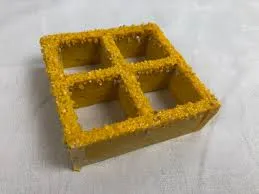loading...
- No. 9, Xingyuan South Street, Dongwaihuan Road, Zaoqiang County, Hengshui, Hebei, China
- admin@zjcomposites.com
- +86 15097380338
- Welcome to visit our website!
reverse osmosis membrane housing
Understanding Reverse Osmosis Membrane Housing
Reverse osmosis (RO) is a revolutionary water purification technology that is widely used in various applications, ranging from household water filtration systems to large-scale industrial processes. At the core of this technology lies the reverse osmosis membrane, an essential component that facilitates the filtration process. However, the efficiency and longevity of these membranes heavily depend on the housing that encases them, known as reverse osmosis membrane housing.
What is Reverse Osmosis Membrane Housing?
Reverse osmosis membrane housing is a protective casing designed to hold the RO membranes in place, ensuring proper operation and maximizing filtration efficiency. Typically made from durable materials like polypropylene, fiberglass, or stainless steel, these housings provide a secure environment for the membranes, shielding them from physical damage and contamination. The design of the housing is pivotal, as it not only protects the membranes but also optimizes the flow of water during the purification process.
Types of Membrane Housing
There are primarily two types of membrane housing single-element and multi-element housings. Single-element housings contain one RO membrane, making them ideal for smaller systems or applications where the demand for purified water is limited. On the other hand, multi-element housings can hold several membranes, significantly increasing the system’s capacity and efficiency. This is particularly beneficial in industrial settings or municipal water treatment facilities, where large volumes of water need to be purified rapidly.
reverse osmosis membrane housing

Importance of Proper Size and Configuration
Choosing the right size and configuration of membrane housing is crucial. The dimensions must accommodate the specific type of RO membranes used and the intended application. A well-fitted housing ensures that the membranes operate at optimal pressure, reducing the risk of leaks and maximizing the purity of the output water. Conversely, improperly sized or configured housings can lead to excessive pressure drops, reduced flow rates, and premature membrane fouling, ultimately jeopardizing the entire filtration system.
Maintenance Considerations
Maintenance is essential to ensure the longevity and effectiveness of reverse osmosis membrane housings. Regular inspection for signs of corrosion, cracks, or other damage is vital. Additionally, it is important to maintain proper cleaning schedules for both the membranes and the housing. Over time, membrane housings can accumulate sediments, which may lead to reduced flow rates or microbial growth. Implementing a routine maintenance program helps ensure consistent performance and extends the life of the system.
Conclusion
In conclusion, reverse osmosis membrane housing plays a crucial role in the effectiveness of water purification systems. By providing necessary protection, optimizing water flow, and accommodating the needs of the RO membranes, these housings significantly impact both the efficiency and reliability of reverse osmosis technology. As demand for clean water continues to rise across the globe, the importance of understanding and investing in high-quality membrane housings cannot be overstated. Whether for residential, commercial, or industrial applications, the quality of every drop of water begins with properly housed reverse osmosis membranes.
-
Transform Your Spaces with FRP Grating SolutionsNewsNov.04,2024
-
The Versatility and Strength of FRP RodsNewsNov.04,2024
-
The Excellence of Fiberglass Water TanksNewsNov.04,2024
-
The Benefits of FRP Grating for Your ProjectsNewsNov.04,2024
-
Elevate Your Efficiency with FRP Pressure VesselsNewsNov.04,2024
-
Welcome to the World of FRP Pressure VesselsNewsOct.12,2024
-
Unveiling the Future of Filtration: Why FRP Filter Vessels are a Game ChangerNewsOct.12,2024
